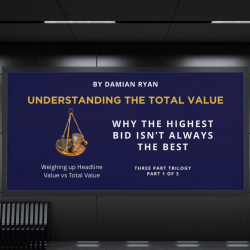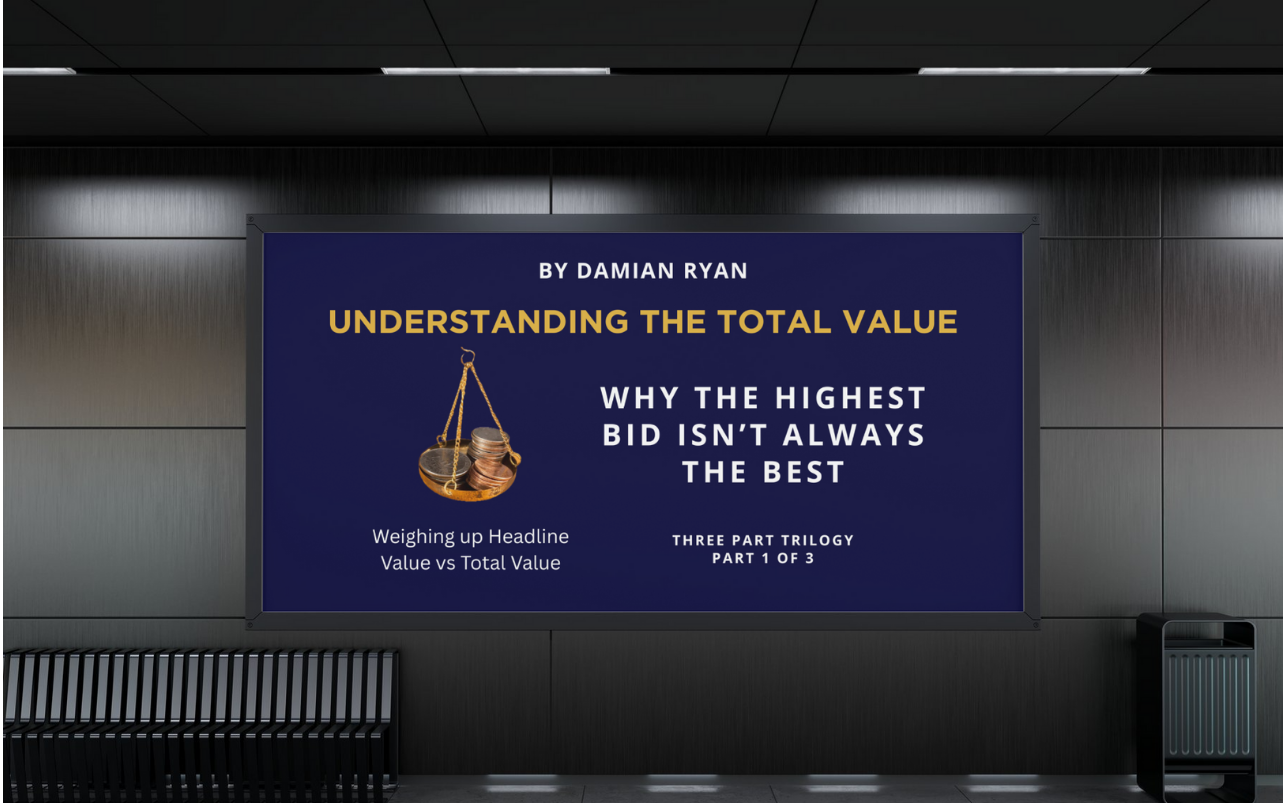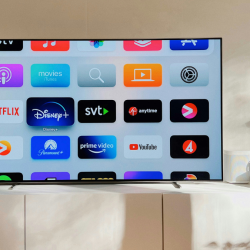The Fermi paradox asks, if there are hundreds of billions of stars in the milky way, and planets are even more common, where is all the life?
Colin Lewis, founder Retail MediaWorks and editor-in-chief of Internet Retailing, often finds himself asking a similar question at retail media events: namely, where are all the marketers?
According to eMarketer, retail media could account for nearly a quarter of all ad spend in the US by 2028. And yet, says Lewis, senior marketers and agencies still ‘don’t quite get it.’
In an interview with MediaCat, Lewis lays out the state of retail media, how it’s advancing, and why brands hold it to unfair expectations.
Is it still retail media or do we call it commerce media now?
If you surf the internet and spend too much time online, like I do, you’ll see that there’s a battle. On one side it’s retail media and on the other it’s commerce media. The battle says that retail media is a subset of commerce media. I’m not convinced by this idea because retail media is something whereby we can track from the advertisement to the sale. The power of that first-party data is at the core of the conversation around retail media.
If we look at commerce media, we’re talking about — let’s say — PayPal, a bank or a telco setting up advertising networks. It’s a fantastic idea, and I think the more the merrier, but the one point on commerce media is that tracking to the sale is challenging. You can have this amazing data with incredible insights and have huge scale, but tracking it to the sale is a little bit more tenuous.
Retail media is predicted to make up around 15.4% of global ad spend in 2025. Is it overinvested?
I don’t think it’s overinvested because the number-one channel for distribution is in-store around the world. That’s 85% of all distribution. Working directly with the retailers to help shift product — whether it was called shopper marketing back in the day or trade marketing as it has been for the last 50 years — has always been important to market your product because in-store is where the action happens. Investing in a channel that can be tracked directly from an ad to a sale is a much more valid use of a marketing budget than, say, trade marketing, maybe even TV advertising.
There’s a big conversation around television advertising. On the one side, a lot of the ad agencies [are] saying that television advertising is what brands need to build mental availability, and stores are physical availability, which is interesting but not as important as brand development.
I have a problem with that. By any stretch TV advertising — particularly linear TV advertising — is on the way down, and the idea of broad reach is gradually collapsing.
Retailers are one of the few that can claim they have broad reach.
We’re not going to get to 100% of the [marketing] budget going into retail media, but I think we’re going to definitely see more rather than less than 15% because all marketers are on the hook for proving return on investment and the correct usage of shareholders’ money. The correct usage of shareholders’ money includes proving a line directly from an ad to a sale. I can only see that going up.
Do you think the retail media space is getting too crowded? Do you see any type of consolidation in the future?
Consolidation is not going to happen with the top tier retailers simply because they would face monopolistic calls. Are Tesco and Sainsbury’s really going to get together and consolidate? No, never. In my home country of Ireland there are two big retailers which have about 23% in the market share and the third retailer has 20%. There’s no way they’d be allowed to work together.
What about second-tier retailers? Yeah, you could see that, but I’d still say the Competition and Markets Authority would be going, ‘Hold on a second, you’re combining your data. I’m not so sure.’ There would have to be a lot of legal discussions before that happens.
What have been the most significant advances in retail media over the past 18 months?
Retail media is made up of three different elements: on-site, off-site, and in-store. In many markets, in-store is still obviously a large percentage of distribution. In-store has come on leaps and bounds in two or three different dimensions in the last 18 months. First of all, the technology has really improved. The technology powering the content management systems associated with the screens have come on in leaps and bounds. The second thing related to that is the off-site. Understanding of off-site and what it can do, and the use of audiences to power off-site, is now much more commonplace. You can see this through the partnerships that have been announced. The third element that has grown is the use of off-site and DSPs. For instance, all the talk about what the Trade Desk is doing and various other DSPs off-site. As I’ve said since five years ago, if you want to know what’s happening in retail media, you look at what Amazon Advertising is doing today. Then you’ll see within a year Walmart Connect will do the same and then everybody else will do the same.
How are brands changing the way they use retail media in response to these developments?
That’s a question of maturity. The top tier brands — L’Oreal, Procter & Gamble, Unilever, and so on —they’ve got set programs. They’re very mature. They know more about retail media than their retailers, and they can, if you will, boss the retailers around because they have a little bit of market power.
There’s another set of brands — the likes of Coca-Cola and brands like that — where the product profile doesn’t necessarily match to retail media. If I’ve got a high-margin product, I’ve got the margin to play with retail media. Whereas a soft drink [brand], maybe doesn’t have the margin to play. These slightly late adopters are still finding their feet in a lot of cases. What I’m finding is regardless of the market, with the possible exception of the US, a lot of the brands don’t understand it. The way I like to put it and frame it for people [is] — it’s 2007 or 2008 and you’ve just heard of Google AdWords, or it’s 2013 and you’ve just heard of Facebook Advertising.
It’s at that stage where they’re not really understanding what’s going on. Obviously it’s great news for me because I work with a lot of brands, giving them workshops on how to do all of this.
Smaller brands, funnily enough, are ahead of the curve. If you are already distributing on Amazon, you know about Amazon Advertising. You’re also a person who arguably is what they like to call a ‘mom-and-pop business’. You might have built a £10-20 million [business], but it’s your money on the line. You really become an expert on Amazon. In fact, when they transfer their distribution into other retailers they actually do very well with retail media. If you have a retailer with a marketplace, the transferring of a company who’s already selling on Amazon to your marketplace is a much better opportunity.
Is all of this changing how marketing departments are structured?
We focus a lot on upskilling around digital marketing for marketing teams. Marketing teams for the most part in bigger markets are split up between brand marketing, shopper marketing, digital marketing, trade marketing and maybe e-commerce. So, four or five different silos and a bunch of expertise within those silos. The problem for these brands is that retail media is a bit of everything. It’s a bit of e-commerce because it’s got sponsored product. It’s a bit of shopper because it’s in-store. It’s a bit of trade marketing because it’s working directly with the brands. It’s a bit of brand marketing as well. It’s what I call the ‘Trojan horse’ for a change in the marketing transformation. Marketing teams are on a journey. In the US it’s very clear that a lot of the big brands are changing their structures because of retail media. What I’m seeing in the UK and Europe is a resistance to that. And the resistance is coming from the brand marketing team. I have this thing in my annual 7 Challenges for Retail Media document. I call it the ‘Fermi paradox of marketing’. This guy called Enrico Fermi said, in all the vast universe that’s out there, how come we haven’t found signs of life? Where is everybody? When we go to retail media conferences like Retail Media X, there are no marketing people there. The Fermi paradox of retail media is: where are the marketers? The very senior marketers don’t quite get it. Their agencies don’t quite get it, or it’s perceived as performance marketing, which is seen as lower status.
Digiday reported that brands in the US are concerned about transparency in retail media and that some retailers might be strong-arming brands into buying their media. How much is the sentiment echoed in the UK?
Well, this sentiment is echoed across the globe. In the US, I heard about one particular retailer where they said, ‘You need to make a commit to a spend.’ I also heard that very specific story in the UK and in Australia as well. That is an echo of what’s happening in trade marketing and the joint business plans that brands have with retailers. In the joint business plan typically there’s a commit for what can be called ‘promo spend’. There are numerous different words for the same thing —supplier funds, co-op funds. The retailers have been doing this for 50 years. The idea is that if you get distribution on the shelf, you should also pay for making the product shift off the shelf. You do that through trade marketing funding. That’s all perfectly legitimate.
What’s happening in retail media is seen as another ask on top of that. The transparency question then is: ‘You’re asking me for more money, so you need to prove it to me.’ That is a slightly disingenuous statement. If I say to you: ‘I know you’re looking for more money, but you need to be transparent as to what’s happening with this and give good measurement.’ Your pushback to me should be, ‘You don’t ask that for TV. You don’t ask that for radio. You don’t ask that for outdoor. You in fact, never get any new data. You never get any insights, and you never get any ROI.’ I know this personally because I’ve been a marketing director spending up to $20 million a year on advertising, particularly TV advertising. Here’s what you get — a TV schedule. And because I’m a nut, I would go through that TV schedule line by line, and I would find when my ads appeared. You get a reach and a frequency number, and you get told when your ad appears; you do not get told about sales.
Now, let me take the other side of that argument. In some cases, the individual retailer is selling media, but they don’t realize they’re in the media business and they don’t necessarily have all the data. So, the accusation of transparency is legitimate. But the context is that they want to provide transparency; they just don’t necessarily have the infrastructure to do so.
So, what I say is: ‘You’re expecting [retailers] to have Google and Meta levels of data, insight, dashboards, self-service on day one. You never expected that of Google, Meta, and various others. In fact, having spent money on Google AdWords in 2006, I can tell you it was ropy in the extreme.
Some retail media networks are now adding influencers and content creators into the mix. Can you explain how this works and why it’s happening?
I call it the ‘TikTokification of retail media.’ We have a model of this already in China, which is live commerce. Video is the vernacular of the internet. It’s not words anymore, it’s video. Influencers who are using video are a very potent tool for brands to tap into.
The big brands, particularly in health and beauty, such as L’Oreal and Unilever, have said this influencer thing is something they want to bet on because they’ve recognised this idea of video being the vernacular of the internet.
Capturing that is key, and applying the idea to retail media network ad inventory is not just rational, it’s a great idea.
Migros is the largest retailer in Turkey with 2600 stores. Their retail media network, led by Kina Demirel is called Mimeda. It already sells influencers within the overall retail media package, and they do some incredible stuff. It’s one of the ones that I would say to people should look at to [understand] where things are going.
In fact, they go full on into, ‘let’s have influencers at events and package it so that the vendors are at the events as well’, which is a very Turkish thing, but it’s cool.
Imagine you’re Superdrug, one of my clients. You’ve got a bunch of screens and it’s all health and beauty related. What if you have those influencers appearing on the screens as ad inventory that could be sold by that retailer?
So, what else does the future hold for retail media?
Firstly, the application of creativity that is regularly used in other advertising channels will get more important. When you go to a retail media conference, you don’t really see anybody talking about creativity. I would argue that it is going to now be a key theme.
[Another] one is the idea of insights and analytics. If you look at the Amazon Marketing Cloud, it’s quite incredible. You can find anything. In fact, if you talk to the Amazon marketing folks, you’ll find that you can even work out how many times an ad needs to be shown before you get a conversion. That’s the holy grail. It’s eight times, apparently. It’s tricky to use, but that will change over a number of years. These retailers and the first party data they’ve got access to will enable them to be Kantar. I’ve worked with a couple of technology businesses around the globe, and I see what they can do, and it’s mind-blowing. It’s just that not a lot of people have copped on to that.
Featured image: Vaseline Verified campaign





















